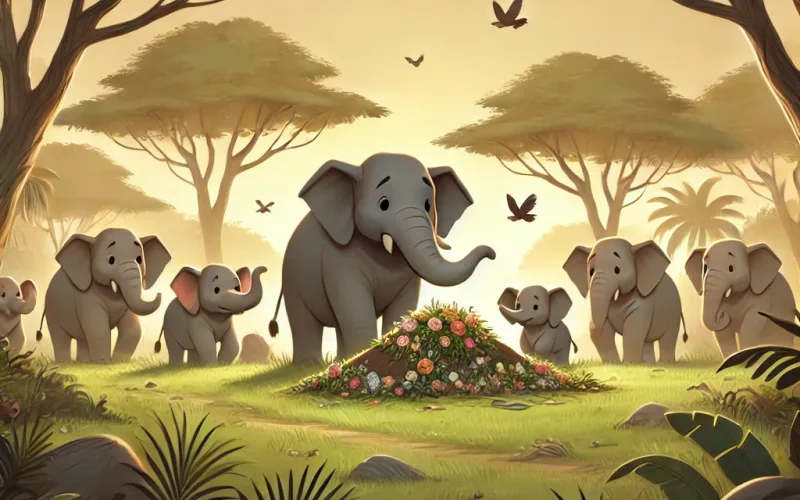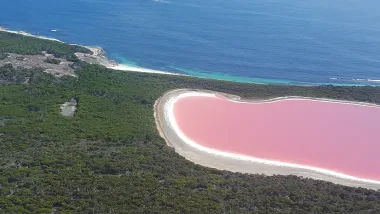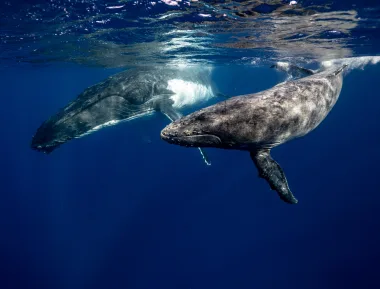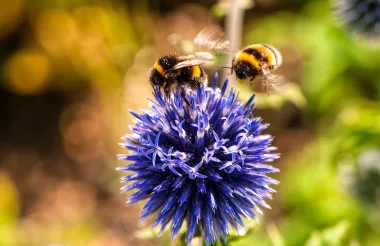Last Updated on September 18, 2024 by Ecologica Life
A recent discovery in India has revealed the mysterious burial of elephant calves, raising intriguing questions about the emotional lives of these majestic creatures. The circumstances surrounding these findings are unusual and may suggest a deeper, perhaps ritualistic, behaviour.
In this article we will explore the circumstances of the discovery, the behaviour of the elephants and other animals and the interpretations and implications of animal burials.
Table of Contents
The Discovery of Buried Elephant Calves
In a landmark study published in the Journal of Threatened Taxa, researchers shed light on a fascinating and somewhat eerie discovery. In the tea plantations of North Bengal, India, scientists discovered five separate instances where the bodies of elephant calves were found buried in irrigation ditches.
What makes these findings particularly intriguing is the peculiar positioning of the calves: each was found with its legs upright, a posture that suggests they were placed into these trenches post-mortem. You can see the image of the burial here (the image may be disturbing to some viewers).
The researchers observed that the ground around these buried calves showed signs of being compacted by the feet of multiple elephants, leading them to hypothesize that these animals may have participated in some form of ritual or group activity around the burial.
The calves themselves exhibited injuries consistent with being dragged after death, further supporting the idea of deliberate placement by the surviving members of the herd.
Understanding Elephant Behaviour
Elephants have been observed to exhibit complex and intriguing responses to death, such as carrying corpses of dead infants. We also know they show high levels of interest in the skulls and ivory of their own species. Other reactions to their dead include silent investigating, sniffing and touching body parts in a way that could indicate they want to move or rouse the dead elephant. On some occasions, they will also place mud or large palm leaves over the bodies of dead relatives.
These behaviours may suggest that elephants experience grief and mourning in ways that we typically associate with humans.
Are The Elephant Burials Intentional?
While this discovery is very intriguing, it is too early to say with any confidence whether these burials are intentional, as they have not been directly observed.
Another explanation is that the dead or weak calves were being carried when they fell into the ditches. This could have caused panic among the family, causing the ditches to collapse.
The History of Burials
Archaeological evidence suggests that our hominid ancestors have been burying their dead for at least 100,000 years, perhaps even longer. Burials fascinate us because of what they suggest about the minds of those who are doing the burying. It suggests an expression of grief, a recognition and awareness that someone in your social circle has passed on and won’t be coming back. It is a way of honouring the dead, and for that you need at least an understanding of what death is.
It has been said that our response to death is indicative of our humanity. No other species that we know of buries its dead in the systematic and ritualistic way that humans do.
How Do Other Animals React to Death?
Elephants are not the only creatures to show interesting reactions to death. Crows, for example, will often gather around the carcass of another crow (often called a funeral). It is thought that crows do this to gather information about what happened to their fellow crow. It seems that they use this information to improve their chances of survival.
Magpies, on the other hand, have been observed placing grass or other objects near deceased companions, a behaviour that some interpret as a form of tribute or mourning.
Some insects, such as ants, release chemicals or scents when they die. Other ants will then remove the dead ant and, in some species, bury it. However, this may not be mourning, but rather a corpse management strategy to limit disease from corpse. We know this because when these chemicals emitted by dead ants are applied on to a live ant, its coworkers will drag the unfortunate individual away to a safe distance. This experiment has even been replicated with rats, where rats tried to bury wooden sticks that have the “death” scent.
Whales and dolphins, known for their high intelligence and strong social bonds, also show behaviours that could be interpreted as mourning. Pods of dolphins have been seen supporting dead or dying individuals, carrying them on their backs, or remaining close to them for extended periods. In one notable case, a female killer whale named Tahlequah carried her dead calf for 17 days and over 1,000 miles, an act that attracted worldwide attention and raised questions about the depth of grief in these animals.
In non-human primates, reactions to death vary from species to species. However, similar to in elephants, many primate mothers have been seen carrying their dead offspring, although lemurs and tamarins don’t engage in this behaviour. Bossou chimpanzees have been reported to carry the bodies of their dead infants for weeks after death, until the corpses were mummified. The mothers cared for their infants as if they were still alive, although the way they carried them suggests that they understood that they were dead. Other primates have been observed carrying mummified infants, although this usually happens in particularly cold or dry environments that favour the mummification process. We must therefore be careful not to confuse maternal grief with some peculiarity owing to some quirk of the local habitat.
Changes in social activity have also been observed following the death of an adult primate member, such as guarding or visiting the body. It has been suggested that this allows the primates to learn about the corpses, and how to reclassify them from living to dead – an essential part of grieving – as well as informing about potential shifts in the group’s hierarchy.
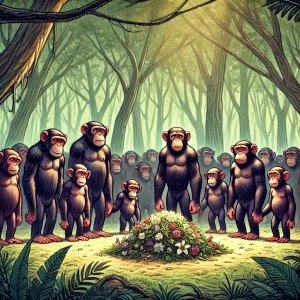
Conclusion
This discovery gives us a possible insight into what goes on in the minds of elephants. The true motivations and awareness behind these actions remain a mystery.
The wider context of animal behaviour in response to death, from the ‘funerals’ of crows to the mourning rituals of primates and cetaceans, means that elephants are not alone in exhibiting responses to death, grief-related or otherwise. However, it is difficult to distinguish between mourning burials and burials as a survival mechanism (e.g. to learn from the body or to prevent the spread of disease), as well as the overlap between the two. This can make the boundaries of what we consider to be ‘uniquely human’ somewhat blurred.
Whether or not elephants actually bury their dead, their lives, emotions, and social relationships are far more complex than many of us give them credit for. We should continue to study these animals to better understand ourselves and to gain a deeper appreciation of the natural world.
